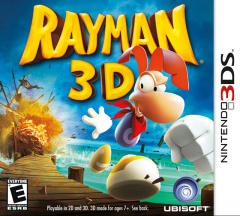port
Tales of Graces f
 It was four minutes into Tales of Graces f that I met the amnesiac
with the impossible purple pigtails. She didn't know who she was, or
where she came from, or anything really. She was a deadly martial
artist, but nearly walked right off a cliff. Later she asked the meaning
of the word "friend." I threw up in my mouth a little and realized that
Graces f would be a tale quickly forgotten. In hindsight, I guess the
cover art should have served as warning.
It was four minutes into Tales of Graces f that I met the amnesiac
with the impossible purple pigtails. She didn't know who she was, or
where she came from, or anything really. She was a deadly martial
artist, but nearly walked right off a cliff. Later she asked the meaning
of the word "friend." I threw up in my mouth a little and realized that
Graces f would be a tale quickly forgotten. In hindsight, I guess the
cover art should have served as warning.
But if the whole game boiled down to waiting for the kid in the Elvis getup to realize that the king is possessed by a demon, I wouldn't have played it for almost ninety hours. Yes, a lot of time is wasted running errands through copy-paste corridors while the characters say how they feel and explain magical jargon. But then you run into a giant spider, and the kids' anime story melts away for a few seconds of glorious battle.
I'll even say that Tales of Graces f has my favorite RPG combat, taking the crown from predecessor Tales of Symphonia. Graces f layers new abilities and limitations onto Symphonia's melee-and-magic arena skirmishes, and the end result is a more dynamic structure that makes earlier games in the series look like button mashing. It's also complicated as hell.
Rayman 3D
 Platformers may be my favorite genre. Maybe I'm a product of the era I
grew up in, when so many developers tried to beat Super Mario Bros. at
its own game. Most failed, but that didn't stop me from enjoying the
multitude of games that celebrated the uncomplicated joy of running and
jumping skillfully across tricky terrain.
Platformers may be my favorite genre. Maybe I'm a product of the era I
grew up in, when so many developers tried to beat Super Mario Bros. at
its own game. Most failed, but that didn't stop me from enjoying the
multitude of games that celebrated the uncomplicated joy of running and
jumping skillfully across tricky terrain.
That said, the move from sprites to polygons did not treat the platformer kindly. So many of the colorful characters that were born in two dimensions were simply confounded by a third axis. I can only think of a handful of 3D platformers I've really enjoyed, and almost all of them begin with the words "Super Mario." To be fair, my standards are very high, and my definition of "platformer" is quite narrow as well.
And I've missed out on more than a few fondly-remembered 3D platformers, one of which is Rayman 2: The Great Escape. Originally released for the Nintendo 64 and Dreamcast, Rayman's first sequel (and first step into 3D) has become a cult classic of sorts. It's at least popular enough for Ubisoft to revive the game for the 3DS, just as it had seven years ago for the launch of the original Nintendo DS. Actually, according to Wikipedia, this game has been ported from the Nintendo 64 to Nintendo DS, Nintendo 3DS, PlayStation, PlayStation 2, Dreamcast, iPod Touch, and PC, in sum.
So how does Rayman 2 hold up after ten years and two ports to a picky platforming purist like me? And do the 3DS' stereoscopic visuals add a significant difference to the experience, as Nintendo claimed they could?
